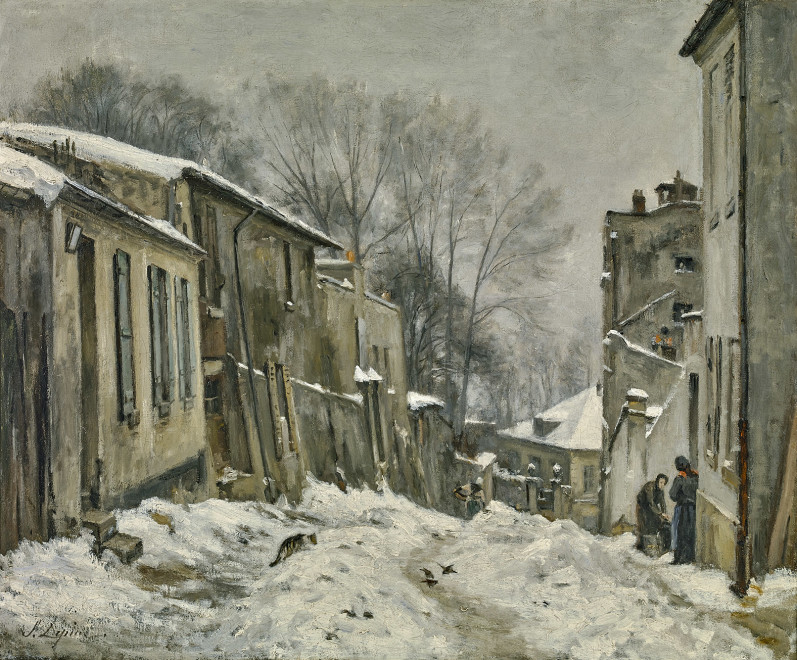46.4 by 55.9 cm.
As Daumier did before him, and Pissarro or Sisley after him, Lépine incorporated an impression of contemporaneity and everyday life in his urban landscapes, thus creating mini histories of Paris at the end of the 19th century.
Provenance
Charles Ricada, Paris
His sale: Paris, Hôtel Drouot, Paris, 20-21 March 1893, lot 93, as Effet de neige
Goupil et Cie., Paris (no. 22904, acquired at the above sale)
Possibly Sidney Arbouin, 1852-1909 (acquired from the above, 24 October 1899)
Arthur Tooth & Sons, London.
Sir P. Walter, London.
Acquired by the family of the present owners, circa 1970.
Catalogue note
Stanislas Lépine’s love for the coast and ports of his home region of Normandy made for many of his most emblematic works. He also became a tireless chronicler of daily life in and around Paris from the late 1850s, when he moved to the French Capital, until his death in 1892. As Daumier did before him, and Pissarro or Sisley after him, Lépine incorporated an impression of contemporaneity and everyday life in his urban landscapes, thus creating mini histories of Paris at the end of the 19th century. While the river Seine with its steep banks, bridges and barges, features prominently in his Parisian landscapes, Lépine also executed 50 paintings of the Butte Montmartre, his neighborhood or quartier. Among his characteristic views of Montmartre, the present work depicting the Rue du Mont-Cenis, the street that leads up to the top of the hill, is an intimate snapshot of the city around him. In this painting, imbued with lyrism and tranquility, Lépine used a limited number of colors, a light palette and very delicate shades of grey. The artist favored discreet tones and glazes, with a fluid, almost transparent use of paint in the manner of his master Camille Corot. He used the rows of houses to form the perspective and reinforce the impression of moving forward and down a hill. The result is a daring composition, where the viewer is placed directly on the street.




